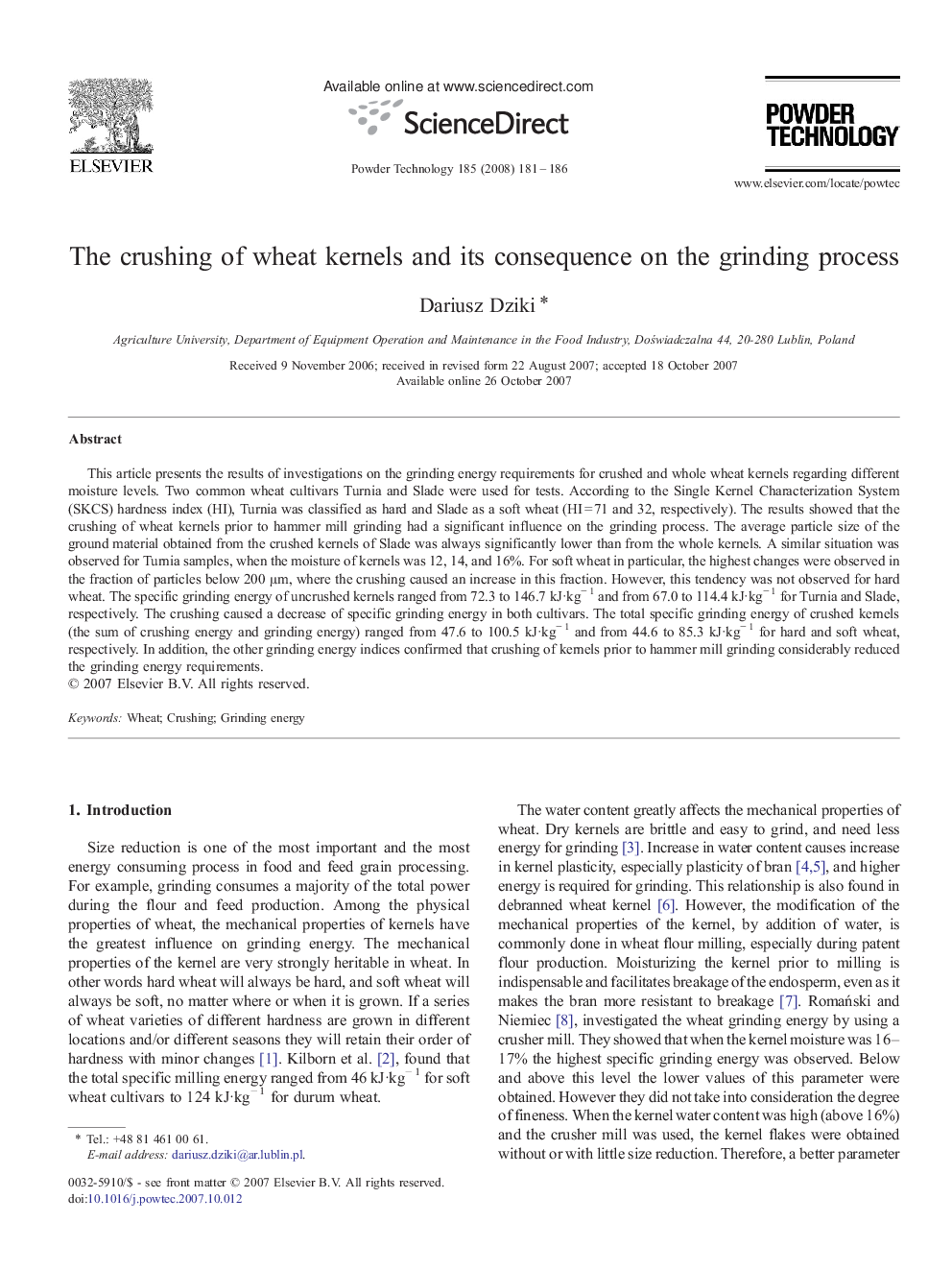| کد مقاله | کد نشریه | سال انتشار | مقاله انگلیسی | نسخه تمام متن |
|---|---|---|---|---|
| 238869 | 465779 | 2008 | 6 صفحه PDF | دانلود رایگان |

This article presents the results of investigations on the grinding energy requirements for crushed and whole wheat kernels regarding different moisture levels. Two common wheat cultivars Turnia and Slade were used for tests. According to the Single Kernel Characterization System (SKCS) hardness index (HI), Turnia was classified as hard and Slade as a soft wheat (HI = 71 and 32, respectively). The results showed that the crushing of wheat kernels prior to hammer mill grinding had a significant influence on the grinding process. The average particle size of the ground material obtained from the crushed kernels of Slade was always significantly lower than from the whole kernels. A similar situation was observed for Turnia samples, when the moisture of kernels was 12, 14, and 16%. For soft wheat in particular, the highest changes were observed in the fraction of particles below 200 μm, where the crushing caused an increase in this fraction. However, this tendency was not observed for hard wheat. The specific grinding energy of uncrushed kernels ranged from 72.3 to 146.7 kJ·kg− 1 and from 67.0 to 114.4 kJ·kg− 1 for Turnia and Slade, respectively. The crushing caused a decrease of specific grinding energy in both cultivars. The total specific grinding energy of crushed kernels (the sum of crushing energy and grinding energy) ranged from 47.6 to 100.5 kJ·kg− 1 and from 44.6 to 85.3 kJ·kg− 1 for hard and soft wheat, respectively. In addition, the other grinding energy indices confirmed that crushing of kernels prior to hammer mill grinding considerably reduced the grinding energy requirements.
The influence of wheat kernel crushing prior to hammer mill grinding on grinding energy requirements was studied. Two common wheat cultivars Turnia and Slade were used. The grinding energy requirements expressed by different grinding indices were always considerably lower for crushed than for whole kernels. The different results in particle size distribution for soft and hard ground wheat were observed.Figure optionsDownload as PowerPoint slide
Journal: Powder Technology - Volume 185, Issue 2, 1 July 2008, Pages 181–186